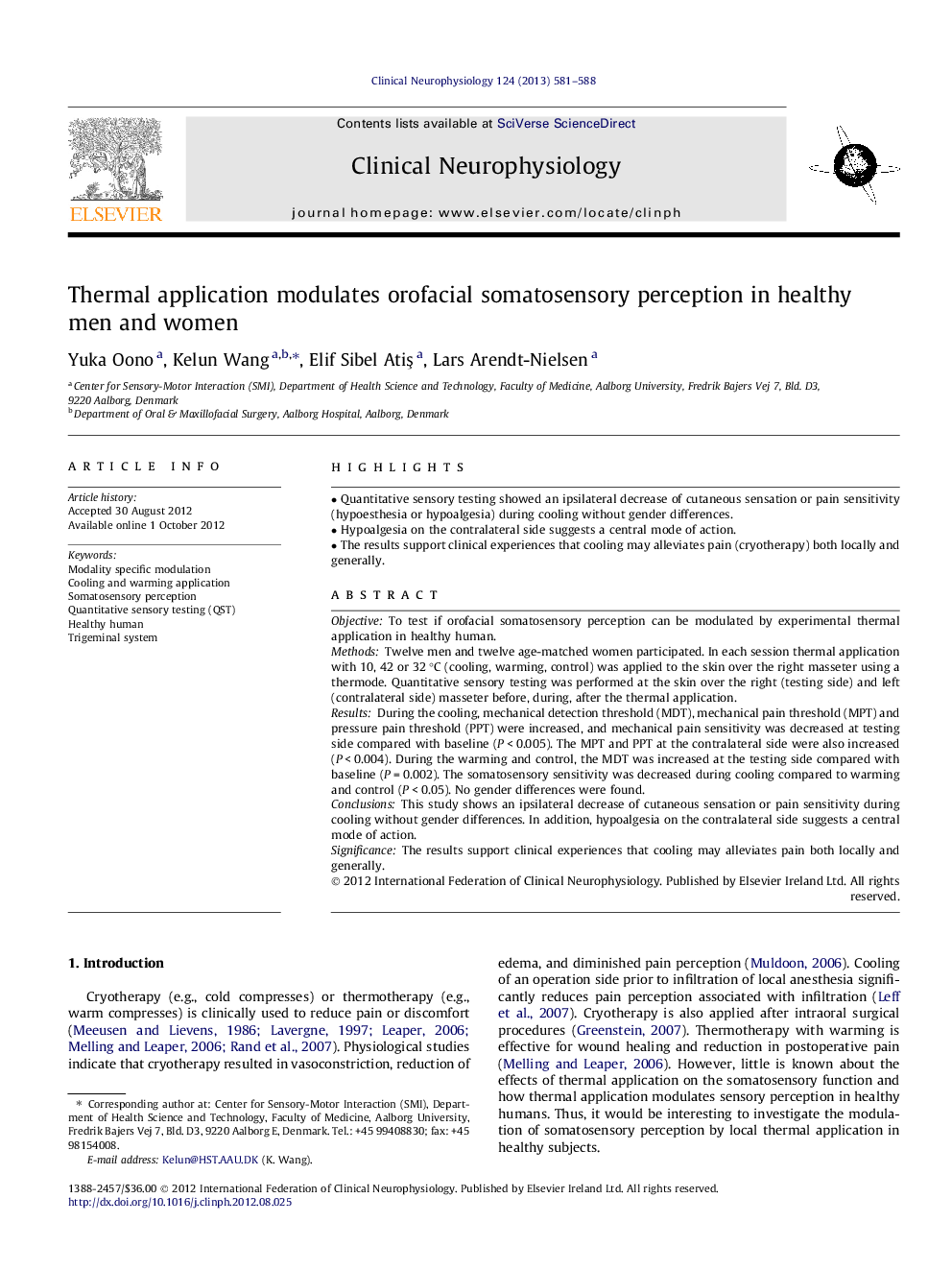| Article ID | Journal | Published Year | Pages | File Type |
|---|---|---|---|---|
| 3044372 | Clinical Neurophysiology | 2013 | 8 Pages |
ObjectiveTo test if orofacial somatosensory perception can be modulated by experimental thermal application in healthy human.MethodsTwelve men and twelve age-matched women participated. In each session thermal application with 10, 42 or 32 °C (cooling, warming, control) was applied to the skin over the right masseter using a thermode. Quantitative sensory testing was performed at the skin over the right (testing side) and left (contralateral side) masseter before, during, after the thermal application.ResultsDuring the cooling, mechanical detection threshold (MDT), mechanical pain threshold (MPT) and pressure pain threshold (PPT) were increased, and mechanical pain sensitivity was decreased at testing side compared with baseline (P < 0.005). The MPT and PPT at the contralateral side were also increased (P < 0.004). During the warming and control, the MDT was increased at the testing side compared with baseline (P = 0.002). The somatosensory sensitivity was decreased during cooling compared to warming and control (P < 0.05). No gender differences were found.ConclusionsThis study shows an ipsilateral decrease of cutaneous sensation or pain sensitivity during cooling without gender differences. In addition, hypoalgesia on the contralateral side suggests a central mode of action.SignificanceThe results support clinical experiences that cooling may alleviates pain both locally and generally.
► Quantitative sensory testing showed an ipsilateral decrease of cutaneous sensation or pain sensitivity (hypoesthesia or hypoalgesia) during cooling without gender differences. ► Hypoalgesia on the contralateral side suggests a central mode of action. ► The results support clinical experiences that cooling may alleviates pain (cryotherapy) both locally and generally.
